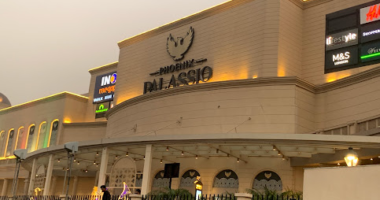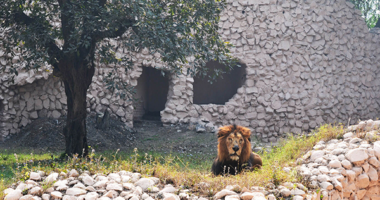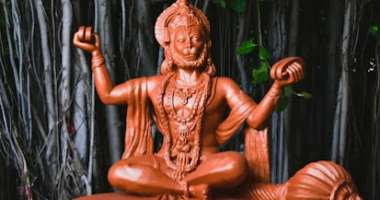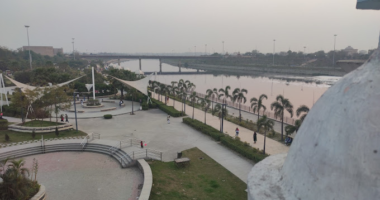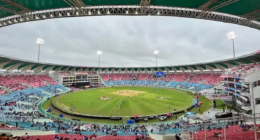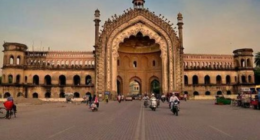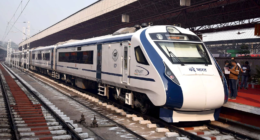Bara Imambara, an architectural masterpiece in Lucknow, stands as a testament to the city’s rich cultural heritage and historical significance. Built in the 18th century, this grand complex is renowned for its stunning design, intricate craftsmanship, and historical importance. In this comprehensive guide, we will delve into the history, architecture, and key attractions of Bara Imambara, providing you with valuable insights and tips for visiting this iconic landmark.

History of Bara Imambara
The Vision of Asaf-ud-Daula
Bara Imambara was commissioned by Nawab Asaf-ud-Daula in 1784, during a period of severe famine in the region. The project was conceived not only as a religious and cultural edifice but also as a means to provide employment to the locals.
Construction and Challenges
The construction of Bara Imambara posed significant challenges, primarily due to its sheer size and the innovative design elements. The project took over a decade to complete and involved thousands of laborers and skilled artisans.
Historical Significance
Bara Imambara holds immense historical significance as a symbol of Nawabi culture and architectural brilliance. It has witnessed numerous historical events and remains a key landmark in the history of Lucknow.

Architectural Splendor
Unique Design Elements
The design of Bara Imambara is a blend of Mughal and Awadhi architectural styles. The grand hall, one of the largest arched constructions without support beams, is a marvel of engineering and aesthetics.

Structural Engineering Feats
The structure is known for its innovative engineering, particularly the labyrinth (Bhool Bhulaiya), which features intricate passages and tunnels designed to confuse invaders and provide strategic advantage.
The Labyrinth: Bhool Bhulaiya
The Bhool Bhulaiya is a maze of narrow corridors and staircases within the Imambara complex. Visitors can explore this fascinating feature, which adds an element of mystery and adventure to their visit.
Key Attractions
The Grand Hall
The central hall of Bara Imambara is an architectural wonder, with its massive arched roof constructed without any supporting beams or pillars. This hall is used for religious gatherings and cultural events.

Shahi Baoli (Stepwell)
The Shahi Baoli is a stepwell within the complex, providing a unique glimpse into the water management systems of the time. Its design is both functional and aesthetically pleasing.
Asafi Mosque
Adjacent to the Imambara, the Asafi Mosque is an important place of worship for the local Muslim community. Its architectural style complements the grandeur of the Imambara complex.
The Imambara Complex
The entire Imambara complex is a sprawling area with lush gardens, ornate gateways, and various structures that reflect the grandeur and cultural richness of the Nawabi era.
Cultural and Religious Significance
Importance in Shia Islam
Bara Imambara holds great significance for the Shia Muslim community as a place of worship and congregation, particularly during Muharram, when it becomes a focal point for religious activities.
Annual Muharram Celebrations
During Muharram, Bara Imambara hosts elaborate processions and rituals commemorating the martyrdom of Imam Hussain. This period sees a large influx of devotees and visitors, adding to the vibrancy of the site.

Visitor Information
Location and Timings
Bara Imambara is located in the heart of Lucknow, making it easily accessible from various parts of the city. It is open to visitors every day from morning until late afternoon.

Ticketing and Entry Fees
Visitors need to purchase tickets to enter Bara Imambara. The entry fees are nominal, with special discounts for students and groups. Tickets can be bought at the entrance or online.
Guided Tours
Guided tours are available for visitors who wish to gain deeper insights into the history and architecture of Bara Imambara. These tours are conducted by knowledgeable guides and are highly recommended.
Tips for Visitors
Best Time to Visit
The best time to visit Bara Imambara is during the cooler months from October to March. The weather during this period is pleasant, making it ideal for exploring the monument.
What to Wear
Visitors are advised to wear comfortable clothing and footwear, as exploring the complex involves a fair amount of walking. Respectful attire is also recommended, especially when visiting the mosque within the complex.
Photography Tips
Bara Imambara offers numerous photographic opportunities. Early morning or late afternoon provides the best lighting for capturing the monument’s beauty. Always be respectful and avoid disrupting other visitors while taking photos.
Nearby Attractions
Rumi Darwaza
Located near Bara Imambara, the Rumi Darwaza is another iconic landmark of Lucknow. This grand gateway is an excellent example of Awadhi architecture and adds to the historical charm of the area.
Chota Imambara
A short distance from Bara Imambara is Chota Imambara, another beautiful monument commissioned by Muhammad Ali Shah. It is known for its exquisite chandeliers and intricate decorations.
Hussainabad Clock Tower
The Hussainabad Clock Tower, located nearby, is the tallest clock tower in India. Its Victorian-Gothic design and striking presence make it a noteworthy attraction.
Cultural Events and Festivals
Muharram Celebrations
Bara Imambara is a focal point for Muharram celebrations in Lucknow. During this period, the monument becomes a center for processions, prayers, and religious gatherings, attracting thousands of devotees.
Annual Festivities
Various cultural events and festivals are held at Bara Imambara throughout the year. These events highlight the rich traditions and vibrant culture of Lucknow, offering visitors a glimpse into the city’s heritage.
To read more about places to visit in Gomti Nagar, Lucknow. Click here



